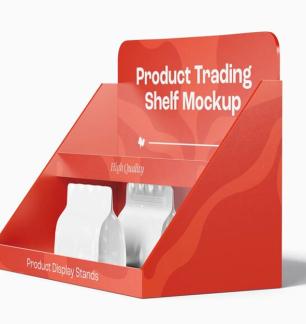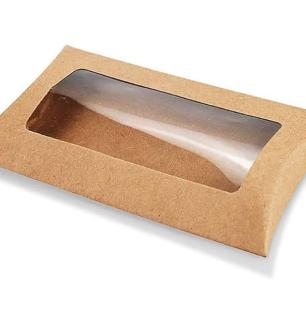How Many Graham Crackers Are in a Box? Here's the Exact Answer You Need
- Box by Industry
- Automotive Packaging Boxes
- Beverage Packaging
- Cosmetic Packaging
- Custom Apparel Boxes
- Custom Bakery Boxes
- Custom Candle Boxes
- Custom Candy Boxes
- Custom CBD Packaging
- Custom Chocolate Boxes
- Custom Christmas Boxes
- Custom Cigarette Boxes
- Custom Food Boxes
- Custom Gift Boxes
- Custom Hemp Boxes
- Custom Holiday Boxes
- Custom Sports Boxes
- Custom Toys & Games Boxes
- Custom vape boxes
- E-commerce Packaging
- Electronics Boxes
- Fragrance Packaging
- Jewelry Boxes
- Marijuana Packaging
- Pet Packaging
- Pharma Packaging
- Pre Roll Packaging
- Retail Packaging
- Soap Boxes
- Stationery Boxes
- Tea & Coffee Cups
- Shapes & Styles
- Mylar Bags
- Mailer Boxes
- Display Boxes
- Folding Cartons
- Pillow Boxes
- Custom Shape Boxes
- Gable Boxes
- Sleeves and Trays
- Window Packaging Boxes
- Custom Size Shipping Boxes
- Subscription Boxes
- Custom Paper Bags
- Custom Gift Bags
- Custom Packaging Bags
- Custom Pouches
- Custom Cards
- Custom Tags
- Custom Stickers and Labels
- Custom Weed Bags
- Custom Food Bags
- Box by Materials
- Blog
- Box by Industry
- Automotive Packaging Boxes
- Beverage Packaging
- Cosmetic Packaging
- Custom Apparel Boxes
- Custom Bakery Boxes
- Custom Candle Boxes
- Custom Candy Boxes
- Custom CBD Packaging
- Custom Chocolate Boxes
- Custom Christmas Boxes
- Custom Cigarette Boxes
- Custom Food Boxes
- Custom Gift Boxes
- Custom Hemp Boxes
- Custom Holiday Boxes
- Custom Sports Boxes
- Custom Toys & Games Boxes
- Custom vape boxes
- E-commerce Packaging
- Electronics Boxes
- Fragrance Packaging
- Jewelry Boxes
- Marijuana Packaging
- Pet Packaging
- Pharma Packaging
- Pre Roll Packaging
- Retail Packaging
- Soap Boxes
- Stationery Boxes
- Tea & Coffee Cups
- Shapes & Styles
- Mylar Bags
- Mailer Boxes
- Display Boxes
- Folding Cartons
- Pillow Boxes
- Custom Shape Boxes
- Gable Boxes
- Sleeves and Trays
- Window Packaging Boxes
- Custom Size Shipping Boxes
- Subscription Boxes
- Custom Paper Bags
- Custom Gift Bags
- Custom Packaging Bags
- Custom Pouches
- Custom Cards
- Custom Tags
- Custom Stickers and Labels
- Custom Weed Bags
- Custom Food Bags
- Box by Materials
- Blog
- Box by Industry
-
 Automotive Packaging Boxes
Automotive Packaging Boxes
-
 Beverage Packaging
Beverage Packaging
-
 Cosmetic Packaging
Cosmetic Packaging
-
 Custom Apparel Boxes
Custom Apparel Boxes
-
 Custom Bakery Boxes
Custom Bakery Boxes
-
 Custom Candle Boxes
Custom Candle Boxes
-
 Custom Candy Boxes
Custom Candy Boxes
-
 Custom CBD Packaging
Custom CBD Packaging
-
 Custom Chocolate Boxes
Custom Chocolate Boxes
-
 Custom Christmas Boxes
Custom Christmas Boxes
-
 Custom Cigarette Boxes
Custom Cigarette Boxes
-
 Custom Food Boxes
Custom Food Boxes
-
 Custom Gift Boxes
Custom Gift Boxes
-
 Custom Hemp Boxes
Custom Hemp Boxes
-
 Custom Holiday Boxes
Custom Holiday Boxes
-
 Custom Sports Boxes
Custom Sports Boxes
-
 Custom Toys & Games Boxes
Custom Toys & Games Boxes
-
 Custom vape boxes
Custom vape boxes
-
 E-commerce Packaging
E-commerce Packaging
-
 Electronics Boxes
Electronics Boxes
-
 Fragrance Packaging
Fragrance Packaging
-
 Jewelry Boxes
Jewelry Boxes
-
 Marijuana Packaging
Marijuana Packaging
-
 Pet Packaging
Pet Packaging
-
 Pharma Packaging
Pharma Packaging
-
 Pre Roll Packaging
Pre Roll Packaging
-
 Retail Packaging
Retail Packaging
-
 Soap Boxes
Soap Boxes
-
 Stationery Boxes
Stationery Boxes
-
 Tea & Coffee Cups
Tea & Coffee Cups
-
- Shapes & Styles
- Box by Materials
- Blog


























